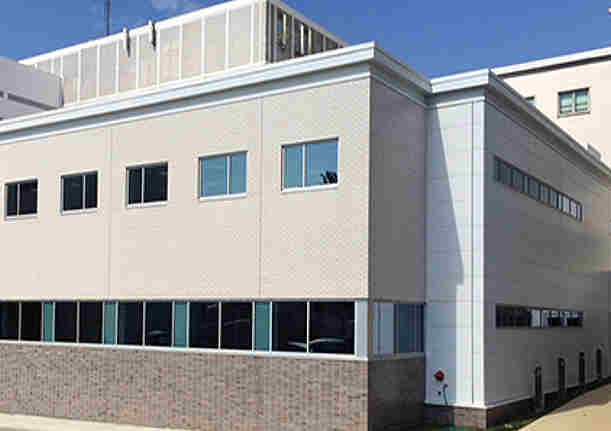Healthcare facilities already struggle with how to accommodate new treatments, levels of care and technologies within tight budgets. Modular health care buildings add a level of flexibility that can help facilities avoid patient disruption caused by on-site construction, prevent down time, and enhance revenues.
Modular construction is considerably faster and less expensive compared to conventional stick-built construction. Whether you are expanding your current healthcare facilities or expanding into a new community, modular buildings can help you create state-of-the-art facilities to serve patients, doctors and hospital staff.

Modular buildings on healthcare campuses are ideal for:
- Medical and dental offices
- Administrative office space
- Ambulatory and outpatient treatment facilities
- Emergency room expansions
- Rehab and physical therapy centers
- Dialysis centers
- Diagnostic imaging centers
- Skilled nursing facilities
- Pharmacies
- Waiting rooms
- Wellness centers
- Gift shops and retail space
An excellent example is the award-winning multi-story office building addition which was designed and built by Modular Genius for the Department of Veterans Affairs in Washington, DC. The 14,500 square foot, two-story structure consisted of 24 modules. Modular construction resolved several project challenges, such as the need for precise installation in tight quarters, minimal disruption of the adjoining hospital, and optimal energy efficiency.
Benefits of Modular Construction
Modular structures are built offsite in a controlled factory environment and partially assembled, pre-wired, thoroughly tested and inspected before being delivered to your location. This ensures that your building will arrive on time, on budget and in an 80% to 90% completed state when it’s delivered.
Environmental concerns and sustainability are other significant factors. Their importance is not just limited to the performance of the building but on the health of the people who occupy it every day. Research shows that green health care facilities lead to better patient outcomes and improved staff health, but finding affordable solutions can be a challenge.
A recent article from the U.S. Green Building Council discussed the medical office building in Puyallup, Washington which was the first in the nation to earn a rating under LEED for Healthcare (LEED-HC). It discusses factors such as landscaping and green spaces, water use reduction, indoor air quality, and the impact of toxins in common building materials.
Modular construction meets the highest level of green building standards, including LEED® certification. Most modules are built with recycled steel, making them sturdy, fire-resistant and mold-resistant. The manufacturing process also uses less energy and water, and waste is controlled with strict manufacturing controls.
While efficiency and economy are the goal of every construction project, modular construction can actually accomplish these goals by being about 20% to 40% less expensive than conventional construction. This is an important factor for healthcare facilities in today’s economy.
No matter what type of health care buildings you have in mind, modular construction can be the ideal solution. It can speed up construction time, save money and deliver more sustainability opportunities. There is literally no type of healthcare building that can’t be designed and built in a modular manner. You may be surprised to discover the many benefits this method of construction can offer.
